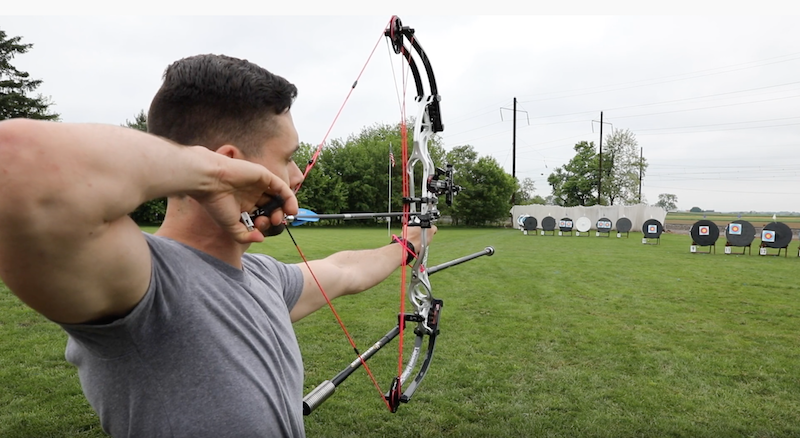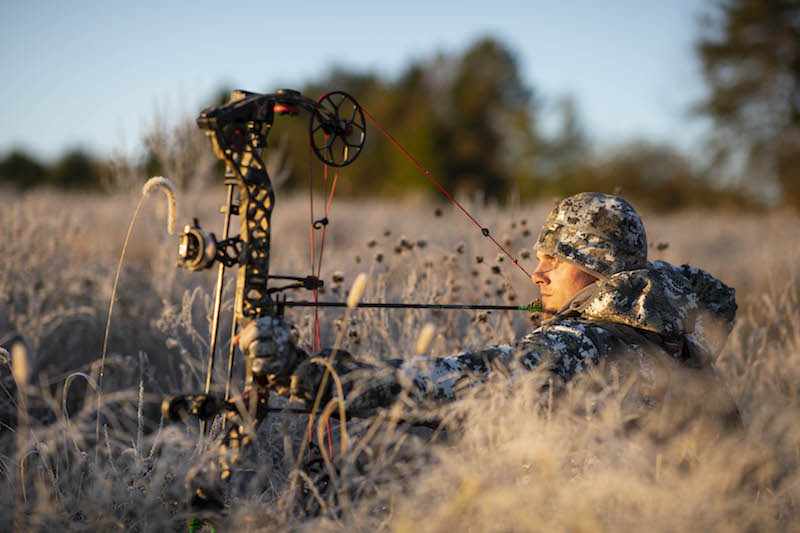Buying a new bow is tons of fun! The latest bow models are arriving at archery shops, and they offer many great options for bowhunters, no matter their expertise or experience.
Whether you’re shopping for your first bow or upgrading to the latest model, shoot several makes and models to compare their feel, and make sure their specs suit your needs.
If you don’t understand bow specs, you’ll think you’re reading an unknown language while browsing archery stores or catalogs as you scan the bow’s numbers and abbreviations. We hope this article translates that terminology so you can pick the best bow for you.

Check the arrow speed when buying a new bow to ensure you’re meeting your needs. Photo Credit: ATA
Arrow speed is measured in feet per second, or fps. The higher the number, the faster the bow. Bows rated at 300 fps are faster than those rated at 290 fps.
Bow manufacturers list “ATA” (Archery Trade Association) or “IBO” (International Bowhunting Organization) next to their speed ratings. ATA and IBO ratings evaluate bow speeds differently. Bow companies use one of those standards to keep bow specifications consistent.
A compound bow’s length is measured from axle to axle, which is where the bow’s limbs connect to the cams. Axle to axle is often abbreviated as ATA. For example, a 35-inch ATA bow measures 35 inches from axle to axle.
Draw length is how far the bow is pulled back. Draw lengths vary by the archer’s size. Compound bows offer a range of draw lengths because they can be adjusted to fit differing draw lengths.
You can approximate your draw length by taking your wingspan and dividing it by 2.5, which provides a starting point to fine-tune the draw length to best fit you. The archery shop’s staff can adjust the draw length until it’s comfortable and you have proper form. Draw length is measured from the apex of the bowstring to the deepest part of the bow’s grip, plus 1.75inches.
Draw weight is the amount of force needed to pull a bow, and is measured in pounds. In archery, the pound sign – # (hashtag) – indicates pounds. Therefore, 45 pounds is written 45# on the bow.
When determining your draw weight, respect your physical limits. If you cannot slowly and smoothly draw a bow, its draw weight is likely too high. Compound bows offer adjustable draw weights. Most bows offer 10 or more pounds of adjustment. That lets bowhunters slowly build their strength, a process that improves accuracy and prevents injuries.

A high “let-off” percentage will allow you to hold your bow at full draw for longer. Photo Credit: ATA
Compound bows use cables and cams to store energy and reduce the bow’s held weight at full draw. That weight reduction is called “let-off,” and is calculated as a percentage of the overall draw weight. For example, a 40-pound bow with a 75 percent let-off would be 10 pounds of felt weight at full draw. Let-off is especially helpful for competition and hunting because it lets shooters hold a bow at full draw longer than if they were using more traditional bows. That helps them take more accurate shots.
Now that you can speak archery’s language, read some bow catalogs and test a few bows at an archery store. An archery pro will help you pick the bow that best fits your size, strength and needs.